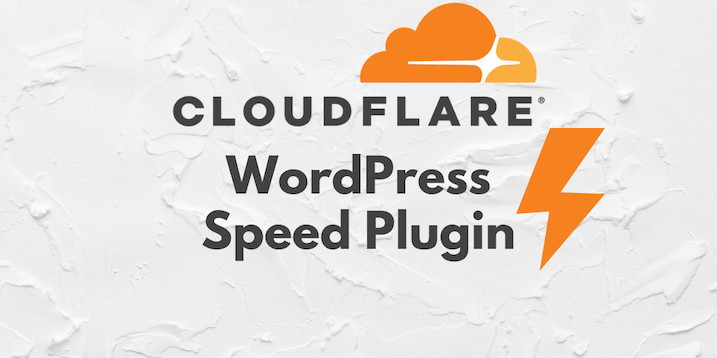WordPress speed is super important these days. For SEO, for user experience, and for not annoying your site visitors in general. WordPress, however, can be a bit of a slow beast if it’s left to its own devices.
There are many ways you can improve WordPress speed, and I’ve reviewed plenty of them over the years: optimization plugins like perfmatters or WP Rocket; content delivery networks (CDN); image compression, fast WordPress themes and hosting. In this post, I’m reviewing something a little different: Cloudflare’s premium WordPress speed plugin ($5/month). I’ll cover what it is, how to set it up, and measure how much it really helps speed up WordPress so you can know if it’s worth paying for.
Let’s speed right to it.
Table of Contents
What is Cloudflare’s WordPress speed plugin?
Cloudflare is a web performance and infrastructure company founded in San Fransisco in 2009. While they offer several premium website services, many WordPress users are signed up for Cloudflare’s free DNS (Domain Name System), CDN and SSL (Secure Sockets Layer) service.
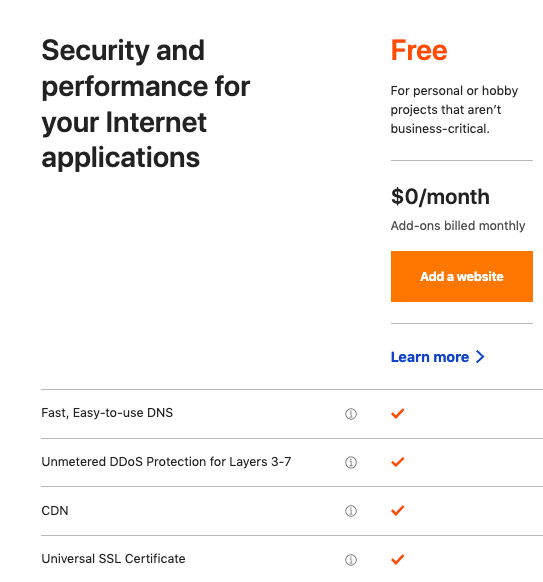
Cloudflare’s free plan can help speed up WordPress websites by caching static resources and then serving them from different global locations. Instead of each site visitor needing to access your single origin server location (e.g. based in New York), a visitor will be served static content from the Cloudflare CDN server closest to them.
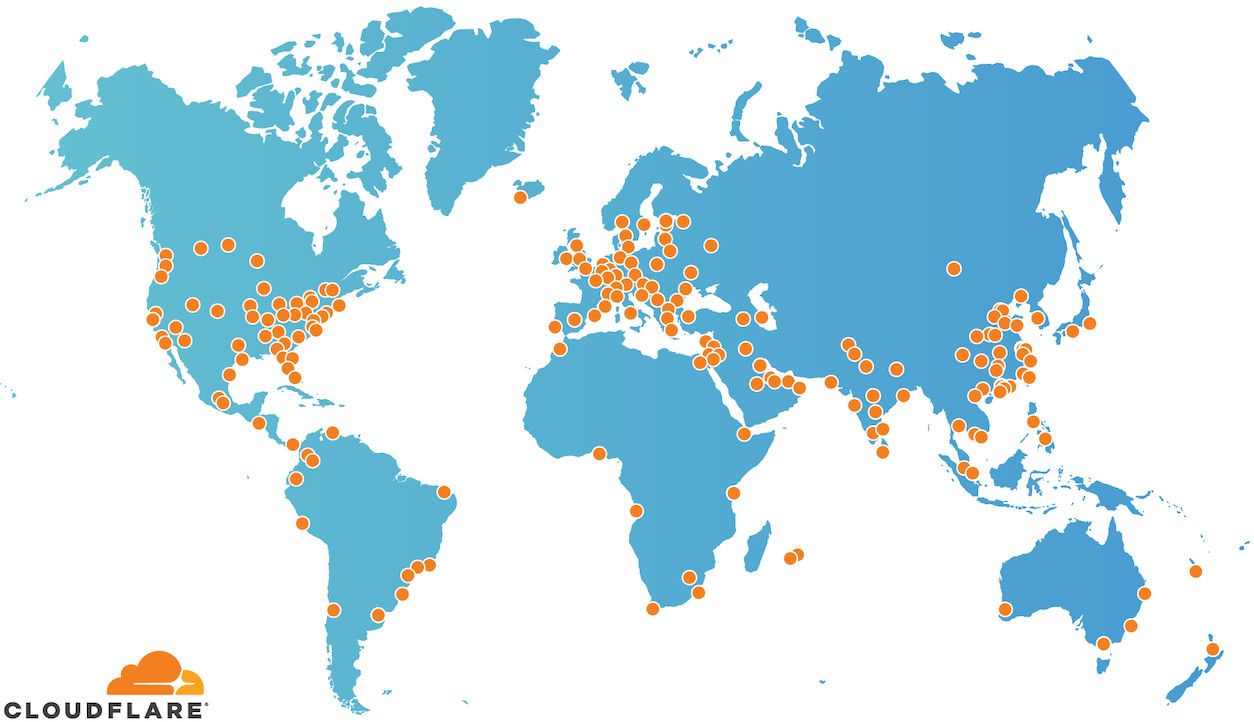
Cloudflare’s WordPress speed plugin is part of the company’s Automatic Platform Optimization (APO) services and costs $5/month (for 1 domain) that claims to “supercharge your WordPress site” with caching and optimizations to make it load up to 3 times faster. For the rest of this post, we’ll refer to it as Cloudflare’s WordPress APO for short.
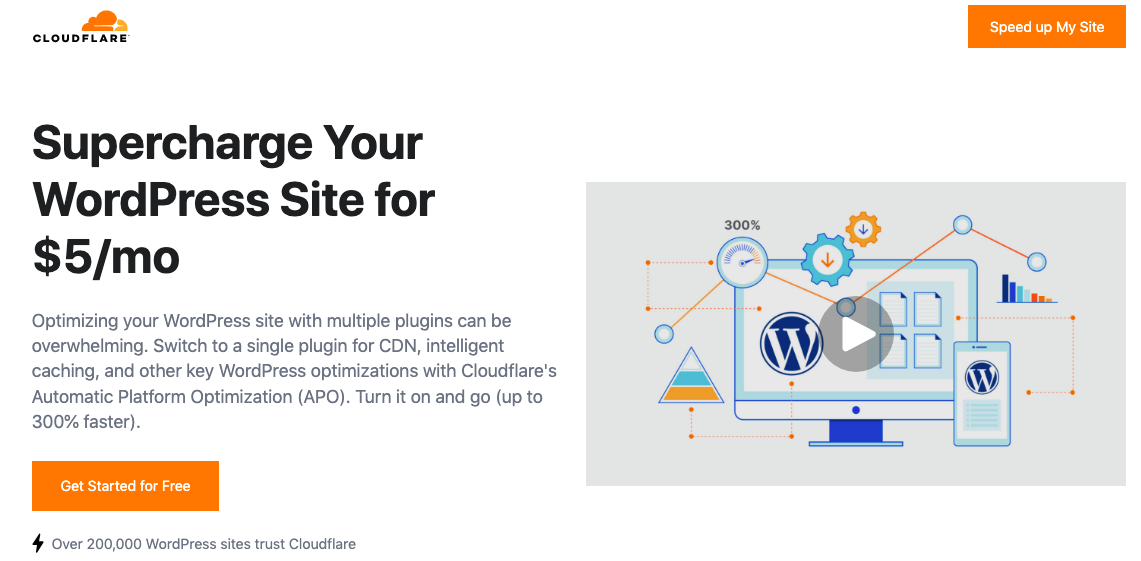
You can only use Cloudflare’s WordPress APO plugin if you’re already signed up for their free CDN plan and use their nameservers (like clyde.cloudflare.com, or angelica.cloudflare.com).
How does Cloudflare’s WordPress APO work?
Cloudflare fixes 3 main issues with slow website loading:
- The distance between your website and the visitor’s browser is shortened (therefore data travels faster) as Cloudflare stores caches in 200+ global locations.
- Cloudflare caches static files as standard (their free CDN plan), reducing requests to your origin server (i.e. your website host).
- Cloudflare’s WordPress APO caches your entire website, thus further speeding up delivery time to the visitor.
Cloudflare’s WordPress APO uses Cloudflare Workers (a serverless application platform that runs across their 200-city global cloud network) to cache dynamic content, i.e. store a static copy.
Your WordPress website is dynamic, i.e. pages are built using a PHP process when a visitors accesses them. A purely static website would just contain HTML code that never changes. Static content can be delivered quickly because there’s no processing required. When you use Cloudflare’s free CDN, Cloudflare creates and stores static content from your WordPress website to deliver it from a server closer to your visitor. It looks a bit like this:
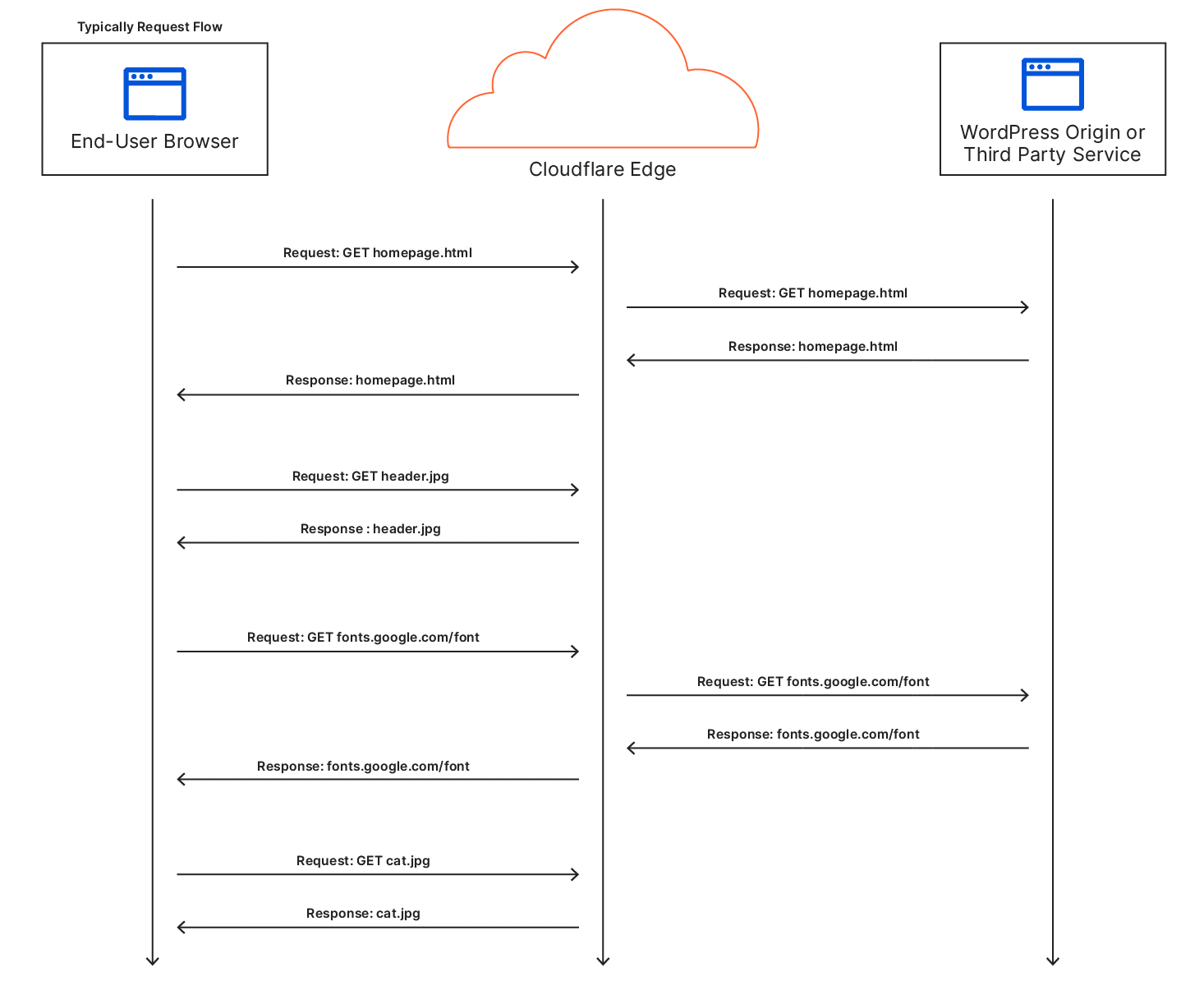
As you can see in the diagram above, Cloudflare has cached some static content (.jpg images) and delivers them to the end user without having to request them from your hosting server. However, some content is unable to be cached, like HTML, because WordPress sites do not store HTML, only PHP files which render HTML on request.
In this example, Cloudflare will speed up your WordPress site, but is limited to only caching images and static files like CSS.
However, if you use Cloudflare’s WordPress APO, all content is cached, stored, and delivered by Cloudflare, like this:
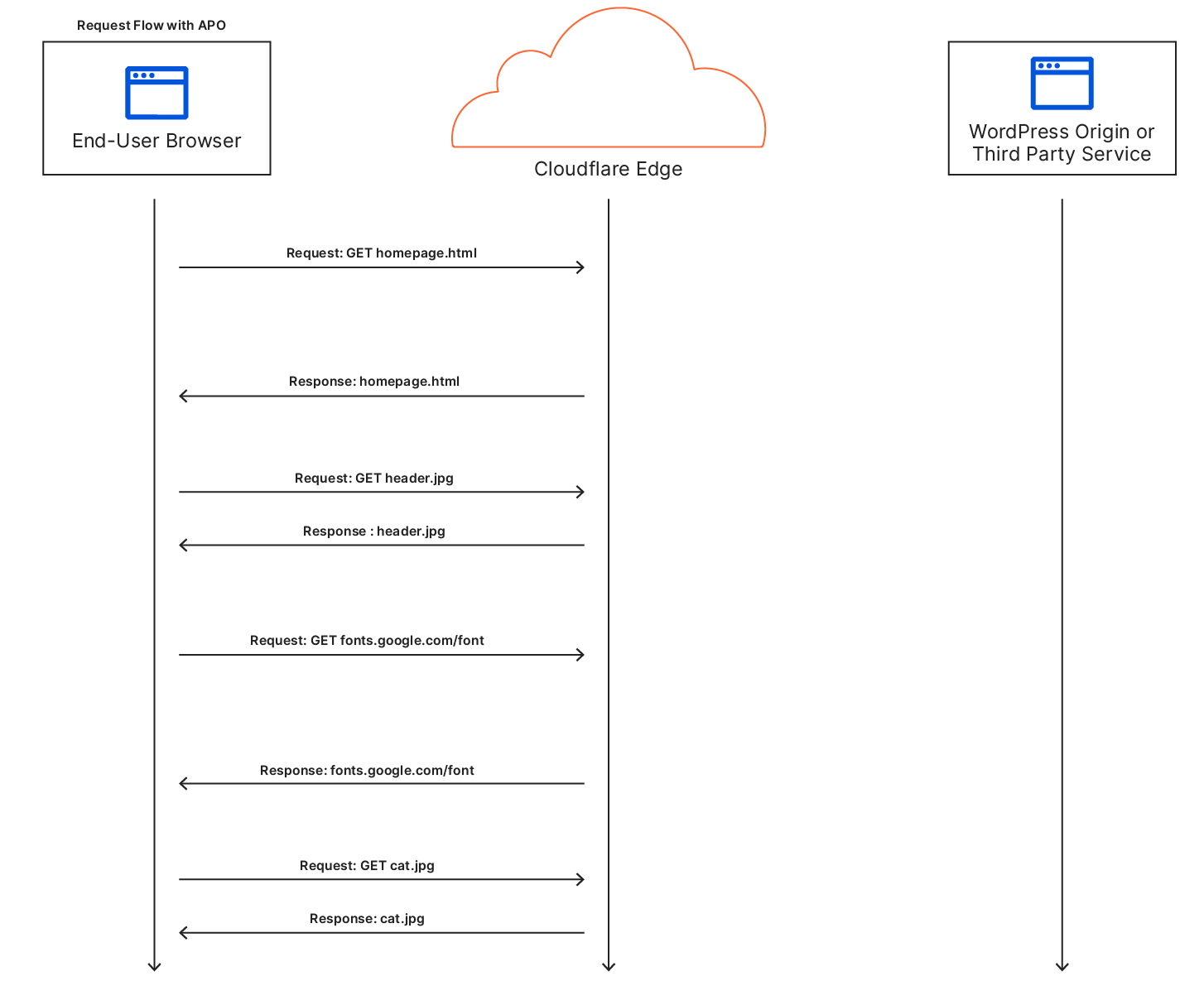
All content, even third party fonts, are now delivered by Cloudflare, making TTFB (Time To First Byte) quicker . This is because Cloudflare’s content is both static (i.e. quick to deliver as it does not have to requested), and in a geographical locations close to the visitor.
If you use Cloudflare’s free WordPress plugin it will let Cloudflare know when you make changes to your site so it can fetch and build a new static cache each time. You can still use the speed service without a plugin, but it may take up to 30 minutes for your visitors to see website changes. Based on this, I make the assumption that with Cloudflare’s WordPress APO set up, Cloudflare will request your site’s pages from your server every 30 minutes, and store static copies across its network.
How to set up Cloudflare’s WordPress speed plugin
Now you know the technology behind Cloudflare’s WordPress APO, I’ll show you how to set it up.
If you’re not already using Cloudflare’s free CDN, you’ll need to set that up first. Instead of me parroting the steps, here’s Cloudflare’s 5-minute setup guide.
Now you’re using Cloudflare’s DNS, you’re ready to get the WordPress speed optimization add-on.
1. Log into Cloudflare and go to Speed > Optimization
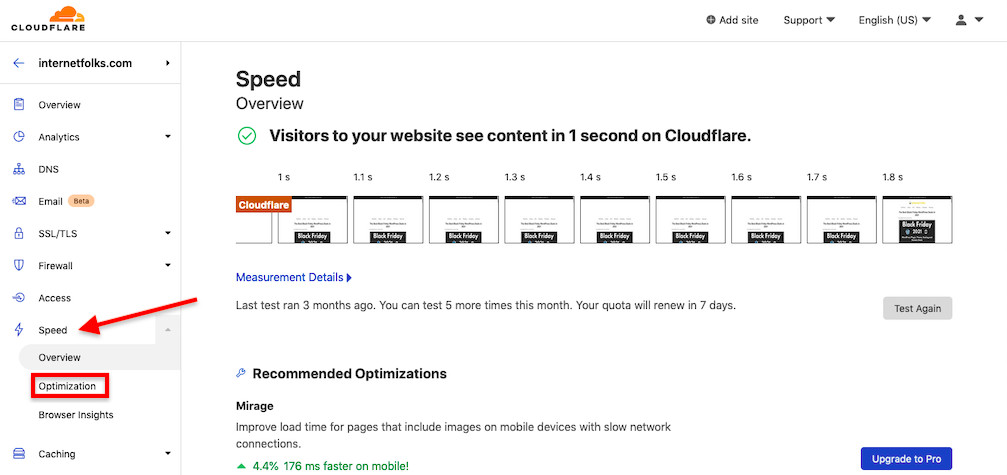
Log into Cloudflare and navigate to “Speed” in the right-hand menu, then click on “Optimization” (if you still have the old layout, the main menu will be on the top bar).
2. Purchase Automatic Platform Optimization for WordPress
Scroll down to the section titled “Automatic Platform Optimization for WordPress”.
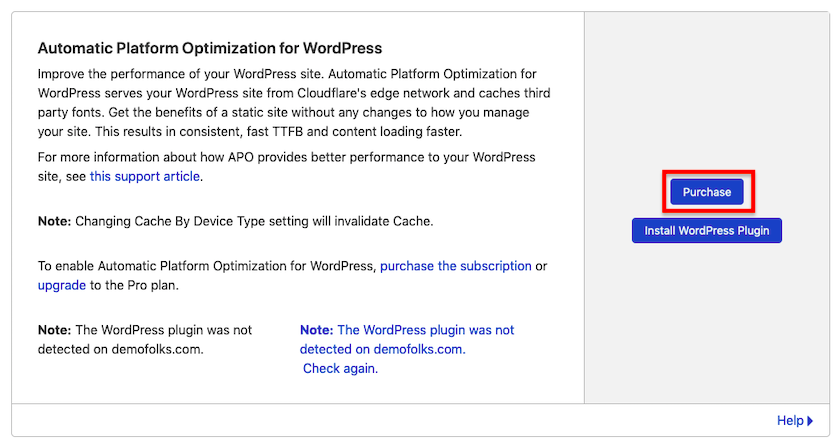
If you’ve not already installed Cloudflare’s WordPress plugin, you’ll see a button that prompts you to install it. Ignore that for now, and click “Purchase”.

Enter your payment details (Cloudflare accepts credit card or PayPal) to proceed. You’ll be setting up a recurring $5/month payment, and since there’s no free trial you’ll be billed the first $5 straight away. There’s no limit to the plan so you’ll pay $5/month for any unique domain, regardless of how much traffic you get. You can use the service with unlimited subdomains at no extra charge.
3. Install Cloudflare’s WordPress plugin (optional)
While not essential, I recommend using Cloudflare’s WordPress APO service alongside their free plugin as it automatically purges old caches and updates Cloudflare when you make changes to your site. It also helps you
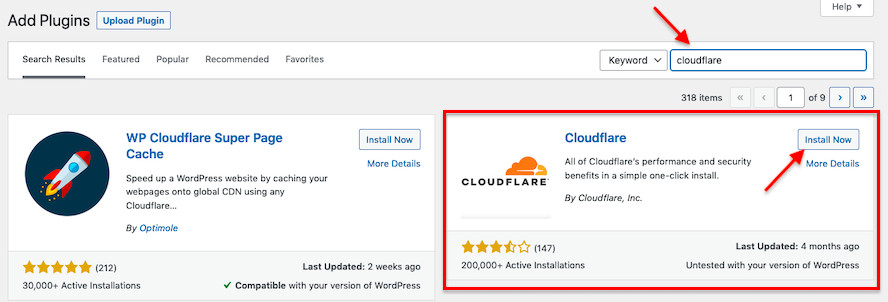
Download Cloudflare’s WordPress plugin, or install it from your Dashboard > Plugins > Add New.
Activate the plugin. You’ll now need to sync it with your account by API. Go to Settings > Cloudflare and you’ll see a prompt to log into your account.
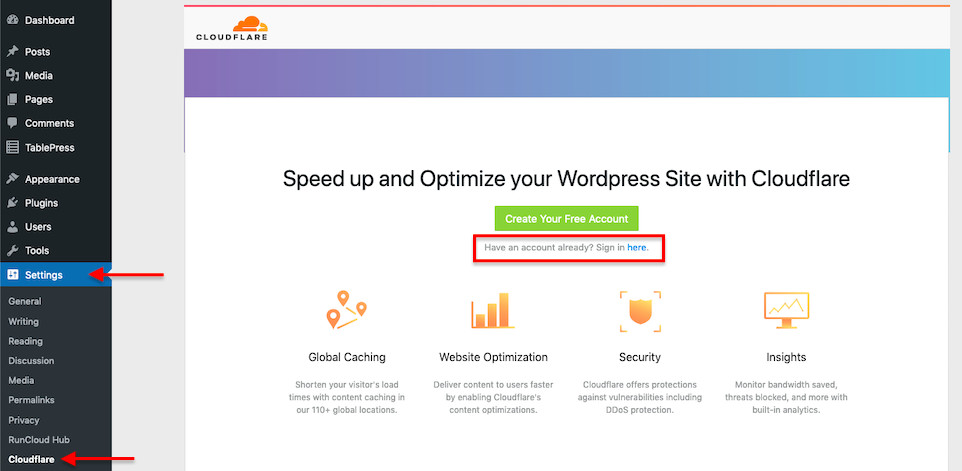
Instead of logging in with your email and password like you do on Cloudflare, you’ll need to enter your email and Cloudflare API key.
How to generate a free Cloudflare API token

Log into your Cloudflare account, and click the user icon in the top-right and select “My Profile” in the drop-down menu. Then select “API Tokens” in the left-hand menu, and click “Create Token” to generate an API token.
4. Activate Automatic Platform Optimization
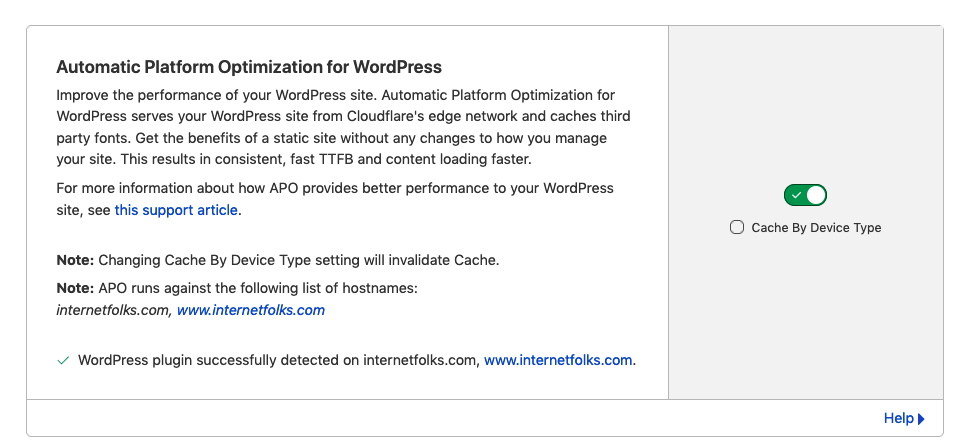
From within the Cloudflare dashboard, navigate to Speed > Optimization and scroll down to the “Automatic Platform Optimization for WordPress: section. Toggle the feature on (it will turn from blue to green).
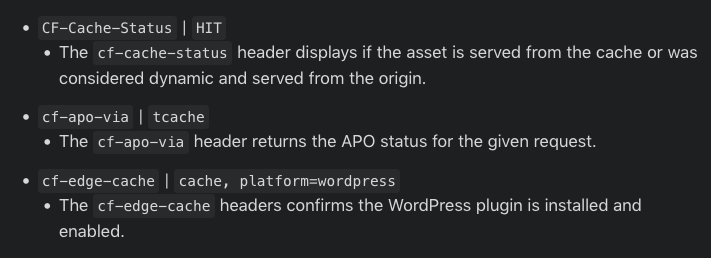
To test that it’s working, go to UpTrends.com, paste in your domain and check the response headers for Cloudflare’s code (above). It should look like this:
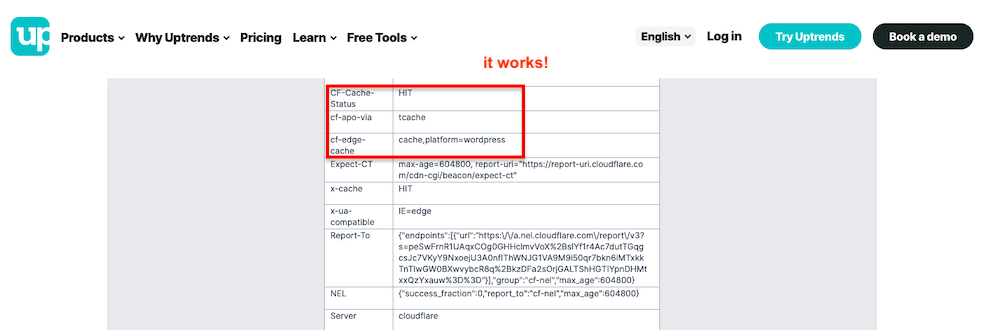
If you’re having any issues setting up Cloudflare’s WordPress APO, you’ll find help in their WordPress APO setup guide.
Now it’s time to see how much of Cloudflare can speed up your WordPress site.
How fast is Cloudflare’s WordPress APO
This is the million five dollar question!
I tested how fast my WordPress website (this one you’re reading) loaded before and after using Cloudflare’s premium WordPress speed plugin.
Keep in mind that in my before tests I was already using a lot of speed optimizations: Cloudflare’s free CDN, compressed images with ShortPixel, and optimized performance with perfmatters. My website hosting (Cloudways‘ $10/month plan on DigitalOcean servers) also uses Varnish server caching.
Using Google’s PageSpeed Insights tool, I measured the mobile performance (mobile core web vitals scores are the most important for Google) of one of my pages. Here’s the result before adding Cloudflare’s WordPress speed service:
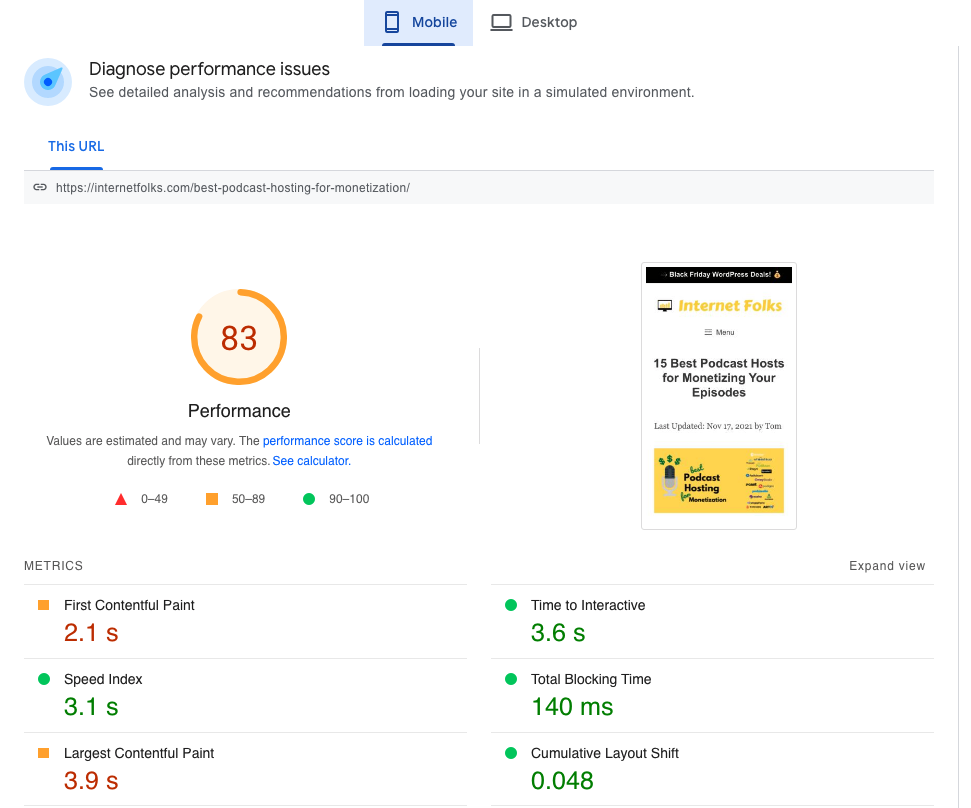
And here’s after:
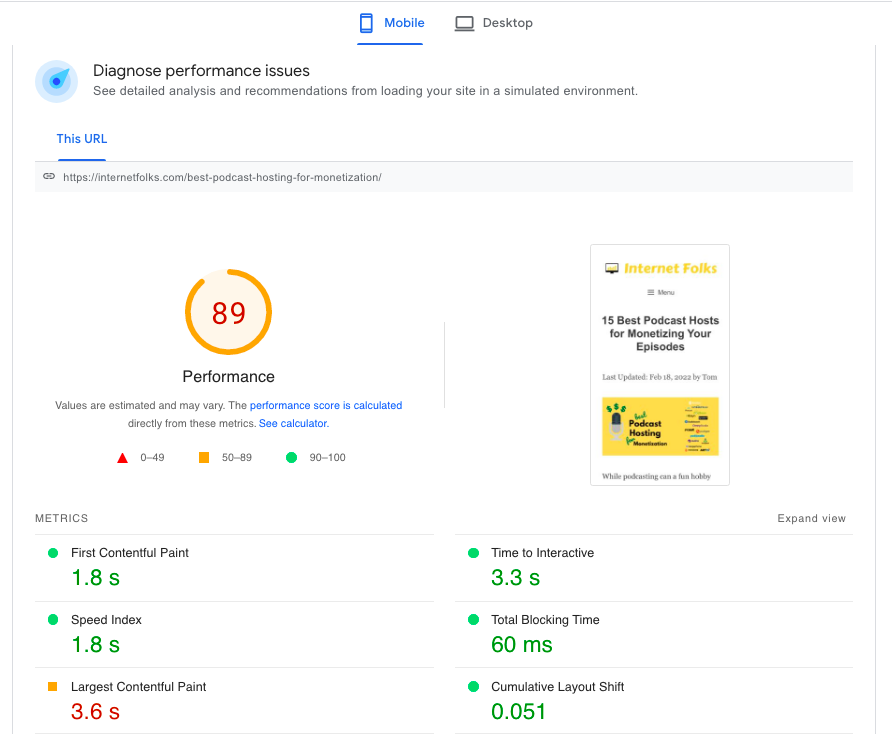
I got a modest speed uplift, with an overall score improvement from 83/100 to 89/100.
First Contentful Paint (FCP, the time it takes for the first element to be loaded) went down from 2.1 seconds to 1.8 seconds. Google recommends site aim for an FCP time of 1.8 seconds or under, so I’m now just in the green.
Time to Interactive (TTI, how long it takes for user to be able to interact with a page) went down a little from 3.6 to 3.3 seconds.
My Speed Index score (how quickly content is visually displayed during page load) went down from 3.1 to 1.8 seconds.
Total Blocking Time (TBT, total time a page is blocked from responding to user mouse clicks etc) went down from 140 ms to 60 ms.
Largest Contentful Paint (LCP, how long it takes for a page to fully load) went down from 3.9 to 3.6 seconds, but it’s still too slow according to Google’s best practice benchmark of 2.5 seconds or less.
My desktop loading times were already pretty good (98/100), but did increase to 99/100. Since most of my users (around 70%) use desktop devices, I’m pleased I’m giving them fast loading times. However, since Google uses mobile-first indexing, it’s mobile loading times I focus on when optimizing a site for search (and you should too!).
Overall, I’m pleased with the page speed improvements Cloudflare’s APO delivered as the total cost to me was $5 and a couple of minutes of setup time.
I’d had a problem in the past with slow LCP scores on mobile, so I’m pleased that Cloudflare’s optimization service has cleared that up.
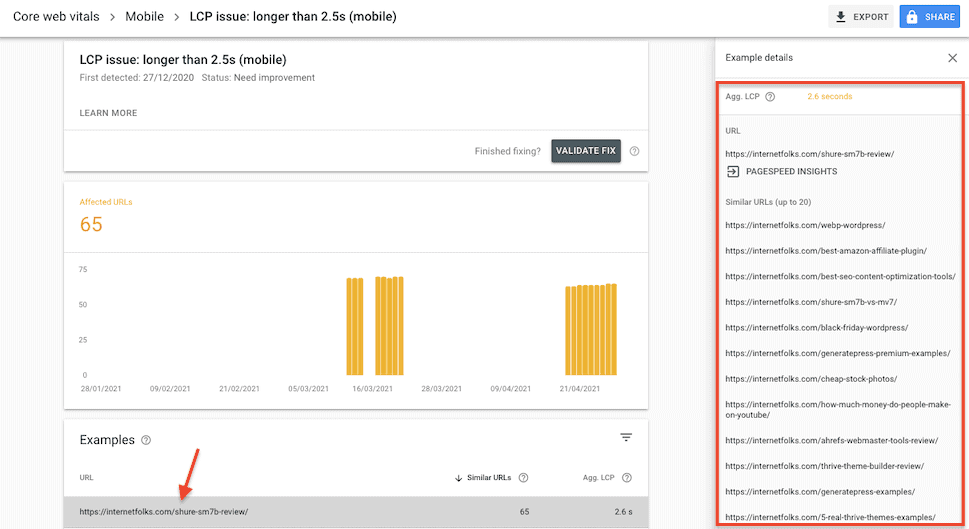
Since switching to Cloudflare’s APO, I can see that every page on my site passes Google’s Core Web Vitals check on mobile based on real world user browsing data.

Final Verdict: Is Cloudflare’s WordPress APO worth it?
The short answer is: yes! For $5/month, you get a significant boost in WordPress website speed, with no effort required. I’m using cheap hosting ($10/month from Cloudways), so my setup is still significantly cheaper than premium WordPress hosting from reliable companies like Kinsta (from $30/month).
Ideally, I’d like to get my pages to load even faster, but I’m still working on it! Watch this space…
In the meantime, I can conclude that even if you’ve made an attempt at improving WordPress speed with some plugins and compression here and there, Cloudflare can still deliver a nice improvement at a low cost and with minimal effort. Recommended.

